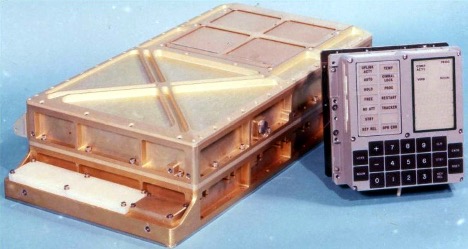This is the first blog in the Future of Hardware Blog Series
The world celebrated the 50th anniversary of the moon landing in 2019 to great fanfare, understandably so. For me, one of the more amazing stories that emerged in the celebration was the fact that the total random access memory (RAM) powering the Apollo Guidance Computer measured barely over 4K. That’s a remarkable stat considering that you’re likely carrying 1000 to 2000X more computing performance in your pocket or purse right now.

But we don’t even have to go back half a century to marvel at the incredible strides we’ve made in hardware performance advancements in compute, network, storage, peripherals, in just a decade. Let me illustrate with some numbers. The first generation of Cisco UCS introduced in 2009 shipped with compute chipsets featuring two to four cores per socket. In terms of memory, the earlier UCS offered up to 2 gigabytes of dynamic RAM (DRAM), which is still far light years superior to the Apollo computers but something that’s readily available in any laptop today. Finally, in terms of network performance, these UCS offered 1G of throughput per node, something your garden variety home router offers today.
Fast forward to 2021 to the UCS X-Series and let’s review some of those numbers. The X-Series offers compute chipsets with 64 to 128 cores per socket and the use of graphics processing unit (GPU) is much more commonplace now than it was in 2009. In terms of memory, a fully populated X-Series compute node can be configured to offer 12TB of RAM. Network connectivity between systems now runs over 100G connections. And for internal storage, the X-Series compute node ships with up to six 30TB drives. It’s a good thing that storage costs are now just pennies, down from a whopping $300,000 for every gigabyte in 1981.
Why the numbers matter
While I find the huge increases in hardware numbers interesting on their own, there are two significant points about the numbers that I think tells a bigger and more interesting story.
One, the continued investment in hardware as shown by the evolution of the UCS over the last decade should dispel any idea of hardware being irrelevant in our cloud and SaaS-first era. On the contrary, there is continued investment and breakthrough innovation happening in hardware with the X-Series being the latest shining example. Try building something of the X-Series’ caliber using COTS (commodity off the shelf) hardware.
Two, hardware design and operations are evolving dramatically to keep pace and to take full advantage of all the other advancements I’ve mentioned. Here are a few examples:
- There are big leaps being made in power distribution and cooling technology including next-generation air and liquid cooling. Today systems are also far more energy efficient through better design but also through intelligence for energy monitoring and shutdown. The days of energy-guzzling data center servers are quickly going away, and it its place are systems that earn Energy Star ratings.
- Traditional compute form factors (pedestal, rack, blade, etc.) may also be a thing of the past. In their place will be new, more compact, energy-efficient models that support highly modularized and distributed applications and workloads. This was the message behind the X-Series “Unbox the future” campaign.
- Peripherals or input/output (I/O) technologies are also undergoing massive evolution. These next-gen interconnects (e.g., PCI-Express, and other emerging I/O tech) are necessary to enable high throughput connectivity between different elements even if they are distributed across platforms or even data centers.
- Management of compute systems is also being revolutionized requiring platform architecture advancements to support hybrid cloud operations. The X-Series is leading the way by being the first computing platform purpose built to work hand-in-hand with Cisco Intersight.
Imagine what more the Apollo mission team could have achieved if they had the benefit of all these technologies at their disposal. But for me, I’m looking forward to all the amazing things that our customers will create and build with using the X-Series for the next decade and beyond. There is one thing is very much likely to happen. The performance numbers I cited that look so impressive to us today may look practically pedestrian in 10 years or less.
And so it goes.
This is the first blog in a series of blogs focusing on the “future of hardware”. Future blogs will examine topics such as the trend toward dis-aggregated, composable hardware, and the convergence of hardware and application architectures.
Resources
Future of Hardware Blog Series
2nd blg in the series: Dissaggregating Memory May Be the Most Exciting Trend for Computing System Design Right Now
CONNECT WITH US